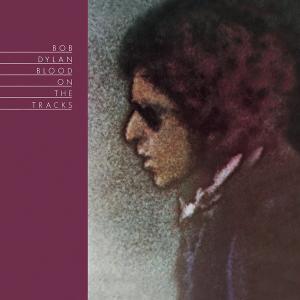
Blood on the Tracks (1975)

1. Tangled Up in Blue
2. Simple Twist of Fate
3. You're a Big Girl Now
4. Idiot Wind
5. You're Gonna Make Me Lonesome
When You Go
6. Meet Me in the Morning
7. Lily, Rosemary and the Jack of Hearts
8. If You See Her, Say Hello
9. Shelter From the Storm
10.Buckets of Rain
In the wake of the 1960s—a decade Dylan had so thoroughly shaped—the 1970s introduced a less predictable phase of his career. Style, genre, and purpose fluctuated with each new release. Few could have anticipated that amid this creative ebb and flow, Dylan would produce an album that, to many, remains the finest of his entire catalog. Blood on the Tracks is not only a return to form—it is a revelation, an artistic exorcism delivered with astonishing clarity.
Gone were the days of protest anthems and generational sermons. In their place stood something more introspective, more refined. Dylan, never one to embrace the “voice of a generation” mantle, turned his attention inward. The result was a cycle of songs that—though born of personal crisis—never slipped into bitterness or self-pity. That they emerged during his divorce gives them added emotional weight, but this is no confessional. Rather, it is a work of sharp observation, lyrical finesse, and, most remarkably, melodic accessibility.
Tracks such as Tangled Up in Blue, Idiot Wind, and Shelter from the Storm now stand among the most enduring in Dylan’s oeuvre. They represent the perfect marriage of lyrical sophistication and musical restraint. The production is clear without being sterile; Dylan’s vocals, often critiqued in earlier years, here sound focused, even tender. There is a warmth to the performances that makes the heartbreak palpable, yet never overwrought.
The album’s sonic palette leans loosely toward the country-tinged atmosphere Dylan had explored since John Wesley Harding, but to label this a “country” record is to do it a disservice. Consider the sprawling, surreal Lily, Rosemary and the Jack of Hearts—a rollicking, almost theatrical piece that defies genre convention and stands as one of Dylan’s most underrated compositions. Curiously, no alternate versions of this track have surfaced with the frequency of other Dylan staples—an oddity for a song so rich in narrative and potential variation.
Perhaps Blood on the Tracks endures because it speaks plainly yet poetically. The album carries a universality not through slogan or statement, but through honest, reflective storytelling. Its gentleness masks a deep emotional intelligence, and for once, Dylan sounds not like a man at odds with his audience, but one inviting them into his world.
This is not just Dylan at his best—it is Dylan at his most human. And, for those less familiar with his more tangled eras, Blood on the Tracks serves as the ideal entry point: accessible, heartfelt, and quietly monumental.
Go back to the main page
Go To Next Review